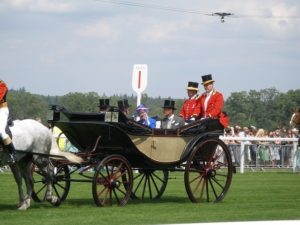Which is the oldest racecourse in Australia?
The oldest racecourse in Australia, still in operation, is Royal Randwick Racecourse, situated in the Eastern Suburbs region of Sydney, New South Wales, approximately four miles south-east of the city centre. Randwick, officially ‘Royal Randwick’ since 1992, began life as the ‘Sandy Course’ in the autumn of 1833 and staged annual races until 1838. By that stage, the racing surface had deteriorated dangerously and, faced with falling attendances, caused by increasingly unruly behaviour of patrons, the course closed.
Thereafter, Randwick was used only as a training establishment, until the Australian Jockey Club (AJC), which had been founded, as the Australian Race Committee (ARC), in 1840, moved its headquarters to the racecourse in 1860. Racing at Randwick resumed in May that year. In 2011, the AJC merged with the Sydney Turf Club (STC) to form the Australian Turf Club (ATC), which currently operates Royal Randwick Racecourse.
Since 2017, Royal Randwick Racecourse has been home to the most valuable race run in Australia,The Everest, staged annually during the Sydney Spring Carnival in October. A weight-for-age contest, run over 1,200 metres, or approximately 6 furlongs, The Everest offers total prize money of A$15 million, but commands an entry fee of A$600,000.
For the record, the first official horse race in Australia took place in Hyde Park, Sydney, in 2010. Meetings were staged, sporadically, until 1925, but at that stage Hyde Park was abandoned in favour of Bellevue Hill.and Camperdown.
 Royal Ascot is, of course, a highlight of the British sporting and social calendar. Remarkably, though, as recently as 1999, the Royal Meeting featured just three highest category, Group One races. Those races were the St. James’s Palace Stakes, Gold Cup and Coronation Stakes.
Royal Ascot is, of course, a highlight of the British sporting and social calendar. Remarkably, though, as recently as 1999, the Royal Meeting featured just three highest category, Group One races. Those races were the St. James’s Palace Stakes, Gold Cup and Coronation Stakes.